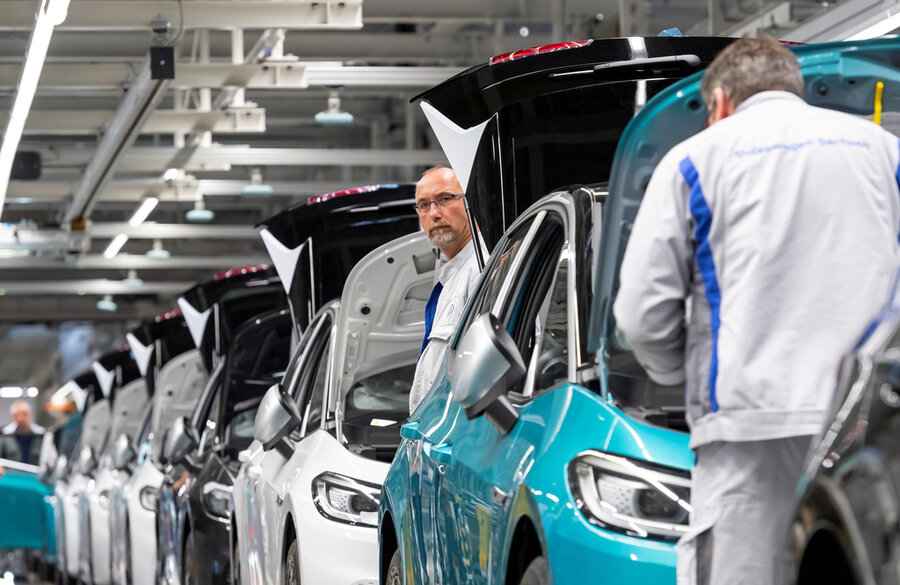Electric-car sales will zoom over latest bumps
Loading...
Gasoline prices are tumbling, not only because people are hunkered down at home but also because Saudi Arabia plans to depress oil prices. For drivers with gas-fueled vehicles, that may be good news. But what will become of the predicted future for electric vehicles?
In the past years, big drops in gasoline prices have hurt sales of gas-electric hybrids like the Toyota Prius. But, more and more, it looks as though the electric vehicle (EV) may survive this latest bump in the road.
For one thing, China and many European nations remain deeply committed to subsidizing EVs to help make a transition to an energy economy free of fossil fuels. The United States lags behind, even though it is home to one of the most innovative brands, Tesla.
While Americans still prefer pickup trucks and large SUVs over small gas-saving cars, government policies that encourage electrification, such as ever higher miles per gallon requirements for new vehicles and rebates for buyers of electric or hybrid vehicles, remain in place.
And as gasoline prices eventually rise, the cost of making electric vehicles continues to drop, especially for the battery packs that power them. Early on, EVs had to be priced for the luxury market. Now manufacturers have mass markets in their sights. In Germany, for example, Volkswagen is about to introduce an EV called the ID.3 that will cost less than $26,000.
More would-be buyers are also noticing the lower operating costs of EVs, such as no oil changes or tuneups. These advantages add up. A 2018 study from the University of Michigan’s Transportation Research Institute found the average operating cost for an EV in the U.S. to be $485 a year, compared with $1,117 for a gasoline-powered vehicle.
The issue of “range anxiety” is fading quickly as well. Battery efficiency continues to improve. On March 4 General Motors said it would introduce 13 new electric vehicles over the next five years with driving ranges of up to 400 miles between charges. A much more robust system of charging stations is still needed, but long driving ranges help to mitigate that problem.
In a 2019 study, business analyst Deloitte, based in London, projected a tipping point in 2022 when the cost of owning an EV would match that of a gas-powered vehicle. That underlines its projection that EV sales are about to grow quickly, grabbing 10% of the world market by 2024. Worldwide sales by 2030 could reach 21 million (for comparison, about 80 million cars were sold worldwide in 2019).
Tesla has helped make EVs cool – fast, quiet, high-tech machines charged up at home like a cellphone. Now the drop in prices along with more choice in brands should entice more budget-minded shoppers. The knowledge that they are cutting their carbon emissions needn’t be the only reason to buy.







